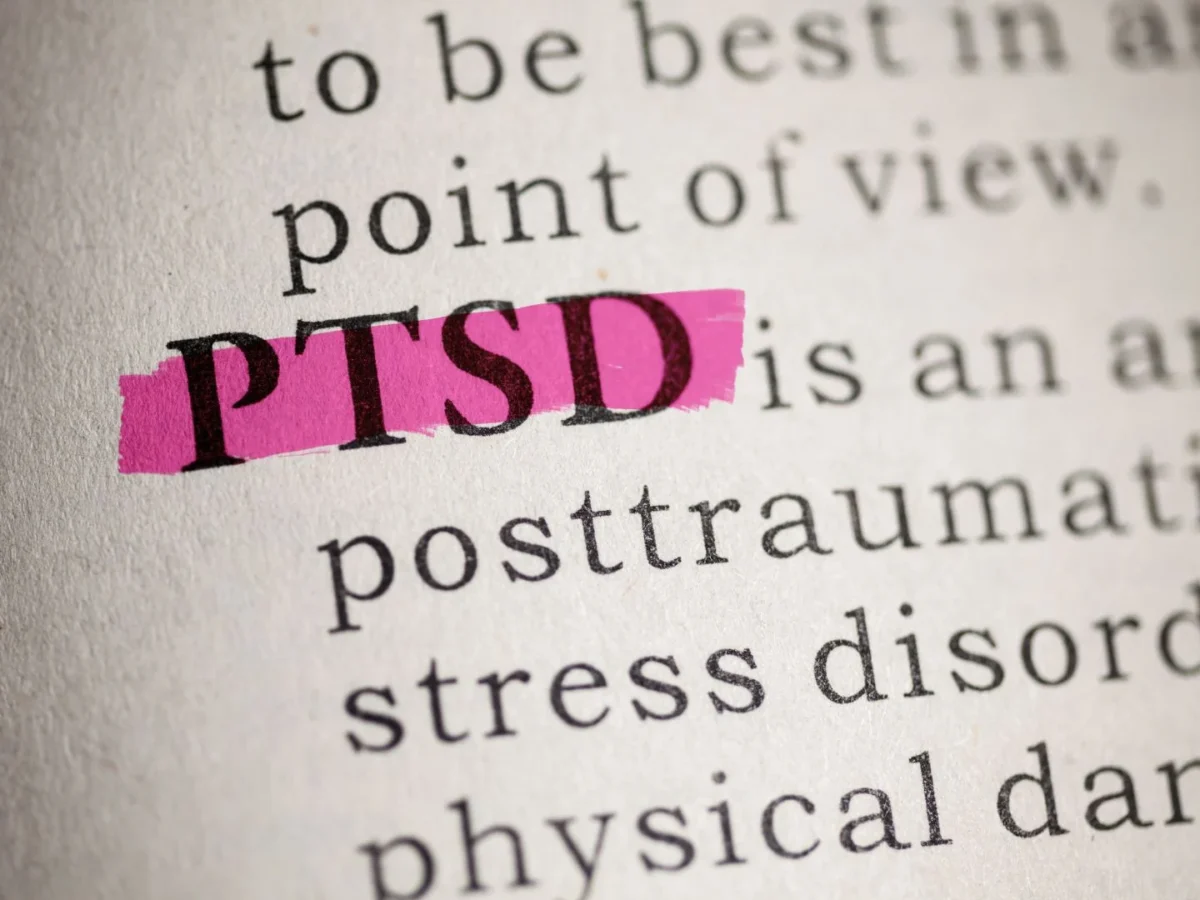
Unpacking Trauma:
PTSD and Its Overlap with Other Disorders
Introduction
What is PTSD?
Trauma and Its Broader Impact on Mental Health
The Link Between PTSD and Other Mental Health Disorders
1. PTSD and Depression
One of the most common mental health disorders that co-occurs with PTSD is depression. Depression is a mood disorder characterized by persistent feelings of sadness, hopelessness, and a lack of interest in life (Campbell et al., 2023). Research has shown that individuals with PTSD are at a higher risk of developing depression, with studies indicating that nearly half of those with PTSD also suffer from depression (Karam et al., 2014).
The reasons for this link are complex, but it is believed that the overwhelming stress and emotional pain caused by trauma can lead to the feelings of despair and hopelessness that characterize depression (Friedman et al., 2011). The traumatic memories and the avoidance behaviors typical of PTSD can also contribute to the isolation and withdrawal seen in depression (Resick et al., 2016).
2. PTSD and Anxiety Disorders
Anxiety disorders are another group of mental health conditions that commonly occur alongside PTSD. These include disorders like generalized anxiety disorder (GAD), panic disorder, and social anxiety disorder. Anxiety disorders are characterized by excessive fear, worry, and physical symptoms such as a rapid heartbeat and sweating (Bisson et al., 2015). Trauma can heighten the sense of danger and threat in the world, leading to chronic anxiety. For instance, someone who has experienced a traumatic event might develop a heightened state of alertness, constantly feeling on edge, which is a common symptom of both PTSD and anxiety disorders (North & Pfefferbaum, 2013).
3. PTSD and Substance Abuse
Substance abuse, which refers to the harmful or hazardous use of psychoactive substances like alcohol and drugs, is another condition frequently seen in individuals with PTSD. People with PTSD may turn to substances as a way to cope with their distressing symptoms, such as flashbacks or anxiety. Unfortunately, this often leads to a cycle where substance use worsens PTSD symptoms, leading to more substance use in an attempt to manage the increased distress (Breslau et al., 2008). Studies have found that the use of drugs and alcohol as a coping mechanism is common among trauma survivors, particularly those who have not received proper treatment for their PTSD (Hoge et al., 2007).
4. PTSD and Dissociative Disorders
Dissociative disorders involve disruptions or discontinuity in a person’s thoughts, memories, surroundings, and identity. Dissociation is often a way of mentally escaping from the pain of trauma (Sar et al., 2007). For example, a person with PTSD might experience dissociative amnesia, where they cannot recall important aspects of the traumatic event, or depersonalization, where they feel disconnected from themselves (Lanius et al., 2006). Research has shown that dissociation is a common symptom in individuals with PTSD, particularly those who have experienced complex trauma, such as prolonged abuse or captivity (Stein et al., 2013). Dissociation can make it difficult for individuals to process their trauma, often complicating recovery (Herman, 1992).
5. PTSD and Borderline Personality Disorder (BPD)
Borderline Personality Disorder (BPD) is a mental health disorder characterized by unstable moods, behavior, and relationships. Individuals with BPD often have intense episodes of anger, depression, and anxiety that can last from a few hours to a few days (Cloitre et al., 2014). There is a significant overlap between PTSD and BPD, especially in individuals who have experienced severe and prolonged trauma, such as childhood abuse (Van Der Kolk, 2005). People with both PTSD and BPD may struggle with emotional regulation, have difficulties in relationships, and experience feelings of emptiness and abandonment. Some researchers argue that BPD might be better understood as a form of complex PTSD, which is a type of PTSD that occurs after prolonged and repeated trauma (Ford & Courtois, 2009).
The Importance of Early Intervention and Treatment
Understanding the relationship between PTSD and other mental health disorders is crucial for providing effective treatment. Early intervention can help prevent the development of additional mental health issues and can significantly improve outcomes for individuals with PTSD. Treatments for PTSD often involve a combination of psychotherapy (talk therapy) and medication. Some of the most effective therapies include the following:
1. Cognitive Behavioral Therapy (CBT): CBT helps individuals change negative thinking patterns and develop healthier ways of coping with their trauma-related thoughts and behaviors. It is one of the most widely used therapies for PTSD and has been shown to be highly effective (Resick et al., 2016).
2. Eye Movement Desensitization and Reprocessing (EMDR): EMDR is a therapy that helps people process and integrate traumatic memories by using bilateral stimulation (often through guided eye movements). During EMDR sessions, the therapist guides the client to recall distressing memories while focusing on an external stimulus. This process helps reduce the intensity of traumatic memories and the associated emotional distress, making it easier for individuals to process these memories in a healthier way (Mavranezouli et al., 2024).
3. Internal Family Systems (IFS): IFS is a type of therapy that views the mind as being made up of multiple parts, each with its own perspective, emotions, and memories. In the context of trauma, certain parts may hold onto painful memories or beliefs. IFS therapy helps individuals access and heal these parts by fostering self-compassion and understanding. By doing so, individuals can achieve a sense of internal harmony and reduce the symptoms of PTSD (Schwartz & Sweezy, 2020).
4. Brainspotting: Brainspotting is a relatively new therapy that identifies points in the visual field where a person’s gaze can help access unprocessed trauma in the brain. The idea is that “where you look affects how you feel,” and by identifying a specific spot in the visual field, therapists can help clients focus on and process deeply embedded trauma. This method is particularly effective for those who may have difficulty accessing traumatic memories through traditional talk therapy (Grand, 2013).
5. Dialectical Behavior Therapy (DBT): Originally developed for Borderline Personality Disorder, DBT is increasingly used to treat PTSD, especially in individuals who experience intense emotions and behaviors as a result of trauma. DBT combines cognitive-behavioral techniques with mindfulness practices to help individuals regulate emotions, tolerate distress, and improve interpersonal relationships. For trauma survivors, DBT can be especially beneficial in managing the intense emotions that arise from traumatic memories and in reducing self-destructive behaviors (Linehan, 2014).
Conclusion
References
Bisson, J. I., Cosgrove, S., Lewis, C., & Roberts, N. P. (2015). Post-traumatic stress disorder. BMJ, 351, h6161. https://doi.org/10.1136/bmj.h6161
Breslau, N., Peterson, E. L., Schultz, L. R., & Lucia, V. C. (2008). Are PTSD and low birth weight associated? A life course perspective. American Journal of Psychiatry, 165(7), 880-886. https://doi.org/10.1176/appi.ajp.2008.07091410
Campbell, D. G., Felker, B. L., Liu, C. F., Yano, E. M., Kirchner, J. E., Chan, D., … & Rubenstein, L. V. (2023). Longitudinal trajectories of comorbid PTSD and depression symptoms among U.S. service members and veterans. BMC Psychiatry, 23(1), 1-15. https://doi.org/10.1186/s12888-023-03847-4
Cloitre, M., Garvert, D. W., Weiss, B., Carlson, E. B., & Bryant, R. A. (2014). Distinguishing PTSD, complex PTSD, and borderline personality disorder: A latent class analysis. European Journal of Psychotraumatology, 5(1), 25097. https://doi.org/10.3402/ejpt.v5.25097
Ford, J. D., & Courtois, C. A. (2009). Defining and understanding complex trauma and complex traumatic stress disorders. In C. A. Courtois & J. D. Ford (Eds.), Treating complex traumatic stress disorders (Adults): An evidence-based guide (pp. 13-30). Guilford Press.
Friedman, M. J., Resick, P. A., Bryant, R. A., & Brewin, C. R. (2011). Considering PTSD for DSM-5. Depression and Anxiety, 28(9), 750-769. https://doi.org/10.1002/da.20767
Grand, D. (2013). Brainspotting: The revolutionary new therapy for rapid and effective change. Sounds True.
Herman, J. L. (1992). Complex PTSD: A syndrome in survivors of prolonged and repeated trauma. Journal of Traumatic Stress, 5(3), 377-391. https://doi.org/10.1002/jts.2490050305
Hoge, C. W., Terhakopian, A., Castro, C. A., Messer, S. C., & Engel, C. C. (2007). Association of posttraumatic stress disorder with somatic symptoms, health care visits, and absenteeism among Iraq war veterans. American Journal of Psychiatry, 164(1), 150-153. https://doi.org/10.1176/ajp.2007.164.1.150
Karam, E. G., Friedman, M. J., Hill, E. D., Kessler, R. C., McLaughlin, K. A., Petukhova, M., … & Koenen, K. C. (2014). Cumulative traumas and risk thresholds: 12-month PTSD in the World Mental Health (WMH) surveys. Depression and Anxiety, 31(2), 130-142. https://doi.org/10.1002/da.22169
Kessler, R. C., Angermeyer, M., Anthony, J. C., De Graaf, R., Demyttenaere, K., Gasquet, I., … & Ustun, T. B. (2020). Comorbidity within mental disorders: A comprehensive analysis based on 145,990 survey respondents from 27 countries. Epidemiology and Psychiatric Sciences, 29, e153. https://doi.org/10.1017/S2045796020000633
Kilpatrick, D. G., Resnick, H. S., Milanak, M. E., Miller, M. W., Keyes, K. M., & Friedman, M. J. (2013). National estimates of exposure to traumatic events and PTSD prevalence using DSM-IV and DSM-5 criteria. Journal of Traumatic Stress, 26(5), 537-547. https://doi.org/10.1002/jts.21848
Lanius, R. A., Bluhm, R., Lanius, U., & Pain, C. (2006). A review of neuroimaging studies in PTSD: Heterogeneity of response to symptom provocation. Journal of Psychiatric Research, 40(8), 737-746. https://doi.org/10.1016/j.jpsychires.2005.07.007
Linehan, M. M. (2014). DBT? Skills training manual. Guilford Press.
Mavranezouli, I., Megnin-Viggars, O., Grey, N., Bhutani, G., & Pilling, S. (2024). Psychological and pharmacological interventions for posttraumatic stress disorder and comorbid mental health problems following complex traumatic events: Systematic review and component network meta-analysis. PLOS Medicine, 21(1), e1003852. https://doi.org/10.1371/journal.pmed.1003852
North, C. S., & Pfefferbaum, B. (2013). Mental health response to community disasters: A systematic review. JAMA, 310(5), 507-518. https://doi.org/10.1001/jama.2013.107799
Resick, P. A., Monson, C. M., & Chard, K. M. (2016). Cognitive processing therapy for PTSD: A comprehensive manual. Guilford Press.
Sar, V., Akyüz, G., & Doğan, O. (2007). Prevalence of dissociative disorders among women in the general population. *
Psychiatric Research, 149(1-3), 169-176. https://doi.org/10.1016/j.psychres.2006.01.005
Schwartz, R. C., & Sweezy, M. (2020). Internal family systems therapy (2nd ed.). Guilford Press.
Stein, D. J., Koenen, K. C., Friedman, M. J., Hill, E. D., McLaughlin, K. A., Petukhova, M., … & Kessler, R. C. (2013). Dissociation in posttraumatic stress disorder: Evidence from the World Mental Health Surveys. Biological Psychiatry, 73(4), 302-312. https://doi.org/10.1016/j.biopsych.2012.08.022
Van Der Kolk, B. A. (2005). Developmental trauma disorder: Toward a rational diagnosis for children with complex trauma histories. Psychiatric Annals, 35(5), 401-408. https://doi.org/10.3928/00485713-20050501-06
Yehuda, R. (2002). Post-traumatic stress disorder. New England Journal of Medicine, 346(2), 108-114. https://doi.org/10.1056/NEJMra012941

